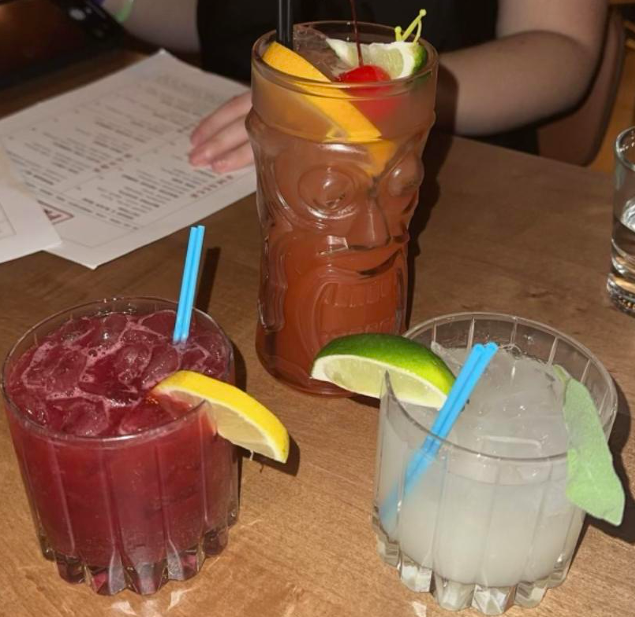
Although most of us have a general sense of how to read a food label at this point in our lives, the origin of the labels themselves maintains an aura of mystery. As the market for packaged food soars, increasing by 92 percent over the last decade to an outstanding worth of $2.2 trillion in 2012, it can sometimes be difficult to trust the strategically-designed, colorful food labels that throw around phrases like “all natural” or “fat free” in a ploy to win over consumer’s hearts and stomachs.
Contrary to popular belief, the United States Food and Drug Administration does not approve individual food labels on packaging before it can be sold. Instead, they provide general requirements that must be followed, such as including the nutrition information, name of the company, etc. They state that any claims made on the packaging must be truthful and not misleading.
However, it is up to the individual company and not the FDA as to how the nutritional content of the product is determined for labeling purposes. There is no prohibition on what companies can use to determine this, and some use regular informational databases to find the nutritional content of each product in the food package. It is fully up to the company to determine the accuracy of the nutritional content.
On the FDA’s website, one of the questions asked is whether or not a firm can use the information from a competitor’s product to label their product if it is similar. In response, the FDA states, “Products of a similar nature are not necessarily equivalent in ingredients and nutrient value. If FDA found a product to be out of compliance because a firm merely copied its competitor’s label, the firm would be hard pressed to prove that they labeled the product ‘in good faith.’”
The FDA doesn’t even individually approve “structure-function claims.” These are statements on food packages that describe or imply the role of a food in your health or body. A common example of a structure-function claim is something like “calcium builds strong bones.” While the FDA doesn’t actually verify or validate claims like this, they require that companies who use statements like these submit a statement to them within 30 days of first marketing the food product. In fact, that common claim example is actually one that has been disputed in recent years, with some people worried that too much milk actually causes osteoporosis.
Buzzwords on the primary panel display, like “organic” or “made with real fruit juice” that imply or characterize the nutritional content of a food, are called nutrient content claims, or NCC. The FDA has a guide that lays out exactly which NCC are allowed on packages with a list of approved phrases.
Regardless, nutrient content claims can still be misleading and tricky in other ways to consumers. “Fat free” and “zero trans-fat,” for example, do not mean that the product is actually free of those pesky fats that many health-conscious consumers are trying to minimize.
In actuality, nutrition labels round down to the nearest 0.5 grams, which means that any amount of trans fat below half a gram is listed as zero trans-fat. This allows companies to play with serving sizes; therefore, a chip bag with four servings in it may actually have close to two grams of trans fat. Chances are, if partially hydrogenated oil is one of the ingredients listed, that zero trans-fat is misleading you.
The same concept applies to “calorie free” foods – they are listed as such if the serving size is below five calories. Companies are able to play within the regulation to mislead consumers who are trying to be health conscious. Another example of this misuse of NCC is “made with real fruit.”
One woman was particularly perturbed to find that the only fruit her strawberry-flavored Fruit Roll-up contained was some “pears from concentrate.” She took it to court in 2012 and the judge also felt that it was labeling that could confuse reasonable consumers.
Congress recently passed a new labelling law for genetically modified organism (GMO) products in June 2016. Companies will soon be required to label products that contain GMOs, but they have the option to either label it with a code, text or electronically readable code, meaning that you’d have to use your smartphone to check. With companies already weaseling their way around labeling practices, there is clearly a lot of wiggle room in this new policy, though it is a step-up from current practices.
The moral of the story is that food labels can misleading. Unless, of course, you’re looking at a beer label. Malt beverage labels are in their own category, and the man who almost single-handedly approved them from 2004 to 2015 is a legend in himself.
Kent Battle Martin, or Battle as he prefers to be called, single-handedly approved 33,000 malt beverage label applications in 2014 alone. Considered by many breweries as a hard-working tyrant, he was incredibly strict about adhering to labelling regulations and avoiding any misleading wording or symbols. He turned down one label that had an image of a hamburger on it in case consumers thought the drink might contain meat. He rejected a beer with a playing card image on it in case people thought the heart might suggest that the drink was heart-healthy.
Since Battle retired in May 2015, Michael Webster has taken over his position at the Alcohol Tobacco Tax and Trade Bureau. Though Webster has yet to take on the large reputation of his predecessor, know that when the grocery store shelves feel too confusing, you can always trust a beer.
Madeleine Jackman can be reached at [email protected].


















